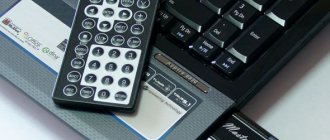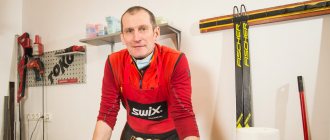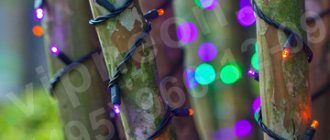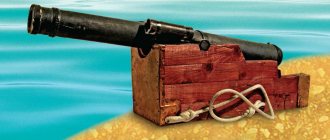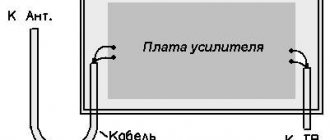Longboards are a fashionable phenomenon. However, not every extreme sports fan can afford such fashion. If you want to save money on buying a board or just want your equipment to be special and unique, you can make it yourself.
In this article we will tell you how to make a longboard yourself.
It is worth noting that assembling a longboard yourself is a simple process, but not as simple as it might seem. Before you start, make sure you know how to handle wood and various machines for processing it.
Making a longboard with your own hands
First, let's understand what a “longboard” is and how it differs from a “skateboard”.
As Wiki tells us, “Longboard is a type of rollerboard, characterized by greater speed, increased stability and improved ride quality. . Longboards are used less frequently for performing tricks. the design allows you to reach high speeds, feel more stable on the board, and at the same time move smoothly, practically not noticing small defects in the asphalt. A longboard attracts primarily with its speed. You can move on it both in the mountains along serpentines and in the city along asphalt paths.” From this we can conclude that a longboard is for speed riding, a skateboard is for tricks. Moreover, this skateboard grew out of a longboard, and not vice versa.
The DIY master and his wife are keen on longboarding. So, first for her, and then for himself, he made a longboard.
Step two: board To make the board, the master took a piece of 3 mm Baltic birch plywood and cut it into three parts 2.5 cm wide and 122 cm long. These parts will make up three layers of the board. He then cut one piece of fiberglass 2.5*122cm wide with the threads running parallel and perpendicular to the board. The master weighs 68 kg and really liked the “springiness” of the board with one fiberglass insert. If you like a stiffer board or weigh more, he suggests adding another piece of fiberglass. If you lay the second sheet of fiberglass on the board, you want the threads to run at a 45° angle to the board.
Next he measures out the epoxy resin. No need to use more than 1/4 liter at a time. Mix the epoxy resin thoroughly for six minutes. The layout should go from bottom to top as follows: plywood - fiberglass - plywood - plywood. If two pieces of fiberglass are used, the second piece is placed between the top two pieces of plywood. When applying epoxy resin, you need to make sure that all the fiberglass is wetted with it.
After completing these steps, the craftsman wrapped the board in Saran wrap to keep the epoxy from dripping all over the press. Before putting the board into the press, he cut two pieces of corrugated cardboard to fit the width and length of the press. This cardboard is placed above and below the board to prevent the press from denting the longboard. Finally, the master clamps both sides of the press tightly with clamps and leaves the board for 24 hours.
Step six: bumper
To increase resistance to impacts from curbs and anything the board might encounter, the craftsman made protective metal bumpers on the ends of the board.
He used square steel pipe to make the bumpers. First, I cut one flange of the profile using a Dremel tool to turn it into a U-channel. Then I cut two triangles on the sides so that the metal could bend at the appropriate angles. Then the bend points are soldered and polished.
Receive a selection of new homemade products by email. No spam, only useful ideas!
*By filling out the form you agree to the processing of personal data
Design Features
A longboard is a board on wheels about 1 meter long. The products are designed for high-speed skating and performing all kinds of tricks. The structures consist of the following elements:
- Decks. It is the basis of a longboard. Made from wood, carbon or composite materials. Long options are the most stable, short ones are more maneuverable.
- Kolesikov. For amateur skating, you should choose soft rollers with a hardness of 78A. The larger the diameter, the better the board absorbs vibrations, but such models cannot boast of maneuverability.
- Skins. The rough coating provides full grip and improves handling.
- Bearings. Small elements located inside the wheels. Low-quality products break quickly and produce specific sounds.
- Bushingov. Attached to the suspension, they serve to increase the softness of the deck's tilt and controllability.
A skateboard and a longboard have many similarities (for example, they look similar), but there are also differences. The first is a traditional stunt board, the width reaches 18-23 cm, length - 76-80 cm. Due to the hard wheels and suspension, it is not used for riding on city streets. A longboard consists of a straight, long deck (up to 150 cm), equipped with large soft rollers and a high suspension. The design accelerates better compared to a skateboard. Used for riding, including on hilly or mountainous terrain, and on specialized trails.
A longboard with soft large wheels ensures comfortable riding even with minor road surface defects. The model's load capacity reaches 110 kg.
Drawing of a future electric longboard.
First of all, on a piece of paper you need to draw the shape of the future longboard. We draw by hand, and then we’ll deal with the dimensions.
Approximate drawing of a longboard
When we have figured out the shape, we move on to calculating the sizes.
To do this, we place two steel corners on the plane and estimate all the elements of the future homemade product.
This way everything will be placed on the board.
Making a longboard frame
The frame will be made of a steel box measuring 20 by 40 mm. Next, we cut out the blanks from the box. For everyone, this process will be different, it all depends on the shape of the future longboard.
At the end, we put everything together for a final check.
Final fitting of all components
After this, you can proceed to welding work. Even if you do not have a welding machine, you can turn for help to any car workshop or other place where welding work is carried out. I think they will definitely help you for a nominal fee.
Longboard body after welding
Freeride.
Freeride longboards
There are not only like in this picture.
This type of deck is rather something universal. They can be used for freestyle, freeride, slides, not very fast downhill, pumping, carving and cruising, everything will depend on the selected setup
: suspensions, wheels, bushings.
If you want to try yourself in a little of all styles of riding, then feel free to take a similar longboard
.
By the way, you can cruise on anything
, as long as you don’t mind the weight of the kit (in the case of downhill decks). In these pictures I have provided example boards. The one on the left is more universal, the one on the right is directionally tailored for freeride.
Electric longboard assembly process
We will connect the frame and the board using rivets. We place a board on the frame, match all the corners, and then use a drill to make the first hole. We connect the board and frame using rivets.
Drill the first hole and rivet it
We drill the remaining holes in the same way, riveting them along the way.
As a result, we get this appearance of the board:
Mounting wheels on a longboard
Once the board is ready, we begin installing the wheels on the longboard. This is not an unimportant point, since incorrectly aligned wheels will upset the balance when driving.
Turn the board over and position the wheels.
Marking the locations for the holes
Drill through holes for wheel mounts
Screw the wheels to the board
As a result, we get the following result
At this stage, you can check the reliability of the board and see how the board can withstand your weight.
Working with longboard electronics
At this stage we will position the batteries. In our case, 6 6-volt batteries will be used. As a result, the supply voltage of our longboard will be 36 volts. This is more than enough, because the wheel drive can be powered from a voltage of 24 to 42 volts.
We glue the batteries together with double-sided automotive tape.
Apply double-sided tape to batteries
On the motor side, we install only 2 batteries to leave room for the controller; we attach all the rest on the side of the wheels without motors.
To securely fasten the batteries, cut out a thin metal strip.
Mark the places where the strip bends.
We bend the strip in this way and fix the batteries
Batteries after fixation
Next, we move on to the motor controller board. We will place it directly next to the engines.
Placement of the electric motor controller board
The controller will be protected from enemies by a food bowl.
We fix the controller board on the board using bolts, and then connect the electric motors. There is nothing complicated here, since the colors match.
Connecting the power wires of the longboard electric motors to the controller
This way we connect the remaining wires of the motor driver
Using zip ties, we put the wires in order
To connect batteries, you need a wire with a cross-section of 1.5 square meters. We connect the batteries in series.
Series connection of batteries
Solder the connector to the wires from the battery
Now we connect the batteries and test the operation of the device.
Longboard test. Everything works perfectly.
Installation and connection of the voltage indicator.
To know the condition of the batteries, you need to connect a voltage indicator. We will mount it in a plastic container, which will also protect the control board.
We cut a hole to fit the indicator and mount the indicator there.
Mounting a voltage indicator
We will also install the controller power button there.
Since the container has a large height, we mark it so that we still have an eyelet for fastening, and remove the excess.
After painting we get this cover.
The indicator is connected directly to the battery terminals, after which you can finally assemble the longboard.
Final check of longboard operation
This completes the assembly of the homemade electric longboard.
field testing.
Overview of the main varieties
There are many styles of longboarding. For each of them, different types of decks, suspensions, and wheels are used. Each user chooses the optimal travel option based on individual preferences. Some people like speed and difficult tricks, others like aggressive driving, and others like leisurely walks.
For carving and cruising
Such designs are considered the most convenient and reliable. The deck is in the shape of an elongated oval and has a length of 70-130 cm. The wheels are often soft, with a diameter of 76 mm. A longboard for carving is equipped with practical bearings, so it can easily overcome minor unevenness and accelerate quickly. Advantages of the models:
- excellent maneuverability;
- the ability to cover long distances;
- shortened versions are used to perform tricks;
- wide wheels provide comfort during the trip;
- the maximum speed can reach 100 km/h.
The main disadvantage of longboards designed for cruising and carving is their large size. Since the dimensions of the smallest boards exceed the parameters of a classic skate, many tricks are not available for them.
For slalom
Longboards with a deck length of 60-70 cm are ideal for maneuverable riding and performing tricks. The diameter of wheels of low or medium hardness does not exceed 72 cm. Among the advantages of the models are:
- good maneuverability;
- high speed dial;
- the ability to perform feints;
- acceleration of the board without pushing off with your feet.
This type of longboard has some disadvantages. The structures are not intended for long descents and are less stable compared to other types.
Downhill
The main distinctive features of such a longboard are: a rigid long deck (up to 1 m), strong tracks, which are fixed to the board with through bolts to increase reliability. The model is designed for fast descents, the optimal wheel sizes are from 70 to 75 mm. Among the advantages are:
- acceleration up to 140 km/h;
- durability, reliability;
- stability on different routes;
- The package includes high-quality durable bearings.
People who decide to opt for longboards for downhill should become familiar with their disadvantages. The structures do not have good maneuverability, so they are difficult to take turns. Such models are not suitable for tricks.
Sliding
Longboard is designed for a discipline that is a bit like downhill. It is distinguished by the presence of a large number of slides and reversals. The minimum length of the deck is 90 cm, the board is quite thick, the width reaches 1.3 cm. The wheels are hard, small, and equipped with high-quality bearings. The models have the correct shape, which ensures maneuverability during high-speed descents. Benefits include:
- acceleration to 100 km/h;
- safety and stability of the structure;
- strength, rigidity;
- excellent maneuverability.
These types of longboards are not without their drawbacks. They are considered “highly specialized” and, due to their large size, cause inconvenience during transportation and storage.
Surf style
These are the longest longboards, reaching 1.5-3 m, designed for surfing. The designs allow you to sit, walk or lie down while riding. The deck is 2 cm thick, characterized by high rigidity, and the wheel size is no more than 120 mm. The advantages of the models include:
- increased strength, reliability;
- comfortable riding in pairs;
- the ability to move around the board while moving;
- suitable for covering long distances.
Among other types of longboards, surfing models stand out for their impressive weight and size - this is the main drawback of the designs. The products are clumsy and can only move on high-quality road surfaces.
Dance models
Such longboards are used to perform all kinds of dance tricks. The width of the deck reaches 8-10 cm, length - 80-150 cm. The board is very thin (less than 1 cm), elastic, and sags a little in the center while riding. The wheels have minimal rigidity, the diameter does not exceed 75 mm. The main advantages of the design:
- the ability to perform many tricks;
- good stability indicators;
- high maneuverability;
- attractive appearance.
If you need to choose a longboard for a dance hall, you should know in advance about its disadvantages. The models are not durable and may cause inconvenience during transportation. Despite these shortcomings, they are popular among young people.
Electrical
Ultra-modern longboards are equipped with a motor and battery. Today, such models are produced by many well-known companies. The designs are equipped with additional functionality in the form of USB ports and control panels. The advantages include:
- ease of use;
- functionality;
- folding design;
- original appearance.
Electric longboards are great for the city. The main disadvantage is the high cost compared to classic models.
Longboards designed for freeride must withstand high loads. It is for this reason that the deck will be the strongest and heaviest, the suspension will be wide, and the wheels will be rigid.
Parts needed for an electric logboard.
I bought the electrical parts on AliExpress, and everything else at a local hardware store.
Here is the entire list of parts that we will need for work:
- Electric drive for longboard. I bought it here.
- Controller for drives. I bought it here.
- Battery indicator. I bought it here.
- 6 or 12 volt batteries
- Steel box size 20x40 mm.
- Steel sheet 1.5 mm.
Also, for the work you will need different tools, such as a drill and a fortuna, but this has already been done.
: Putting it all together
Gluing
Glue the ESC and battery in the correct position. You need to use a lot of battery glue to make sure it doesn't fly off after some rough riding.
Easy access
As mentioned above, we place the charging port in the front suspension.
It's also good to make a hole in the rubber to connect the battery to the esc, it's a simple and clean solution. Finally, we tighten each bolt to make sure they don't come loose.
By adding a heatsink to the esc and using a layer of thermal paste, the heatsink gets airflow while riding and keeps the esc cool.
We also 3D printed a small holder for the power switch and glued it to the deck.
General rules for making a longboard with your own hands
First of all, you need to cut the sheets of plywood into equal rectangles with sides of 30x40 cm. After this, you need to give each rectangle the desired shape and the intended line of curvature of the sides. In order for the board to have a given shape, it is necessary to make a pattern, which must be drawn in full size and with a symmetrical pattern.
You can use the Internet and print out the drawing in parts and then glue it together, but even in this case it is important to maintain the symmetry of the drawing. The important thing is that the pattern should be slightly smaller than the plywood rectangle. The distance from the edges to the pattern can be about 1 cm.
After the pattern is ready, you need to attach it to one of the pieces of plywood and mark the center line, which should coincide with the middle of the board. The axis must be drawn clearly and evenly. It is necessary to mark the places where the tracks will be attached.
: Electronics
You can buy a complete set of all electronics; this will save a little time on selecting suitable components, and will definitely work.
There can be one or two motors, but usually one is enough. The double motor will allow you to easily climb the hill, but will also significantly increase the cost of the board. The board engine itself must be powerful enough and have high torque. Brushless motors are commonly used for radio controlled aircraft.
Battery. Most use lithium polymer (LiPo) batteries. They provide good power with a small size and weight. However, they need good care (do not charge longer than necessary, and do not leave them in a discharged state for a long time), because they can catch fire and the battery itself can fail. As an alternative, you can consider a lithium iron phosphate battery (LiFePO4), it is less hassle and still provides plenty of energy. You can buy the battery here, I used 2 4S1P 25C 5000mah batteries, 4S1P means 4 cells (4S) that form one block (1P) but 6S is more than enough and is cheaper.
Equipment and materials
To make a good longboard deck, you need to prepare the following tools:
- press or something that can replace it;
- electric jigsaw;
- laser level;
- screwdriver
The material from which the longboard is planned to be made is also important:
- Plywood sheet 0.4 cm thick. To make a longboard deck, 1 sheet of plywood is enough. But it is important to inspect the sheet when purchasing and make sure that it is even.
- Perforated skin for the deck.
- Pendants of the right size.
- Wheels.
- Carpenter's glue.
- PVA glue.
- Acrylic based paints.
- Self-tapping screws.
What will you need?
In order to create a good projectile that will not let you down the first time you ride, it is not enough to just have a jigsaw and a great desire.
Equipment
Ideally, you should have the following equipment on hand:
- press (later we will tell you how it can be replaced);
- jigsaw;
- laser level;
- screwdriver.
Now we need to talk about what materials you will need to create a longboard with your own hands.
Materials
To assemble a full-fledged projectile, stock up on the following items:
- plywood 4 mm thick. To make one board, one sheet of plywood is enough. However, make sure that this sheet is perfectly even; do not take the first product you come across. You can immediately ask the store to divide the layer into segments of 30 to 40 centimeters. But, if the store cannot provide such a service, it is quite possible to do such work in the workshop yourself;
- longboard sandpaper (it is better to choose perforated one);
- tracks and wheels;
- wood glue;
- PVA glue;
- acrylic paints;
- self-tapping screws
Step-by-step instructions for making a longboard
The most important thing when making a longboard is to find the required type of wood; if it is not possible to get maple, then oak will do.
Instructions for making a longboard:
- It is necessary to determine what shape the deck will be and find a good quality template that will take into account all the design features.
- The resulting pattern should be transferred to one of the plywood sheets, matching the centers of the pattern and the material. .
- The resulting workpiece is polished along the edges.
- To determine the places where the tracks will be attached, you need to perform the following steps: move 8 cm from the bow and 22 cm from the tail.
- After the workpiece is ready, it is necessary to apply a layer of polyurethane to prevent the wood from drying out.
- The last step is to attach the tracks and wheels of the required size.
In order for a longboard to be reliable while riding, it is necessary to attach sandpaper to the top of the deck, which should have a shape that follows the pattern of the board.
Downhill
If you have a thick and heavy board in front of you, most likely it is intended for downhill
(second line in the picture about decks - Speedboarding
).
Here, riders, as a rule, choose not long boards (from 33 to 38 inches), unless they are two-meter strong, of course =). Stability and speed are important in this discipline. A heavy and rigid deck satisfies these requirements. It is also important that you feel comfortable standing on the board. There are many shapes and deflections
, and it is up to you to decide which one is more convenient for you.
By the way, decks are often made aimed directly at downhill and freeride
, because these styles are united by speed and they are closely intertwined. Here are examples of such longboards.
Making a longboard with your own hands
Longboards are a fashionable phenomenon. However, not every extreme sports fan can afford such fashion. If you want to save money on buying a board or just want your equipment to be special and unique, you can make it yourself.
In this article we will tell you how to make a longboard yourself.
It is worth noting that assembling a longboard yourself is a simple process, but not as simple as it might seem. Before you start, make sure you know how to handle wood and various machines for processing it.
: Making a deck
See the photo above for the entire process.
Wood glue
First we glue 3 pieces of wood and bend them slightly.
Cutting, drilling and milling
After drying for a day, we cut the wood into the correct shape for the deck, and also drill holes for the fastenings. Using a milling machine, we make recesses on the back side to “hide” the batteries and electronics there.
Sanding and adding varnish
After sanding the deck, we paint it to protect the wood.
Grip tape attachment
The last step is to add a griptape to the deck.
Let's get started
Let's say you already have separate pieces of plywood 30–40 centimeters wide. Next, you will need to give them the desired shape and form a concave.
Choosing a form
You need to stock up on a template on which the future shape of the board will be drawn in full size. You can create it yourself (just be careful about symmetry) or print it in parts from the Internet. It is important that the length of the sketch is slightly less than the sheets of plywood, so that there is an indentation from the edges.
After this, transfer the form to one of the pieces of plywood. Mark the center line. It should be smooth and clear. Mark with dots the places where the holes for the tracks will soon be.
Let's make a concave
In order to create a good bend in our board, we can use a special press called a slipway. However, if you do not often work with wood, you may not have such a unit in your workshop.
The machine can be replaced with a very simple product. Take a thick board that will be larger than the plywood sheets in length and width, and in the middle attach to it with self-tapping screws a narrow block about five centimeters wide and about three centimeters high.
We stack our pieces of plywood on top of each other so that the sheet with the intended shape is on top. We drill holes around the perimeter of the sheets.
After this, the sheets can be fastened to each other with wood glue.
After you have coated the sheets well with the adhesive, place them on an improvised press so that the rail on the thick board is exactly in the middle of the future product.
The edges of the plywood blank must be attached to a thick board using self-tapping screws. Make sure that all screws are tightened equally. Otherwise, the concave will turn out uneven.
Remember two things:
- You don't need to tighten the screws too much, as the longboard will be uncomfortable to stand on if it bends too much.
- But don't loosen the fastenings too much. After removal from the press, the plywood will bend slightly towards its previous shape.
After a day, you can remove the plywood from the press and be proud that you have created a blank board with a concave with your own hands. Use a laser level to check whether the bend is even. If it has serious flaws, try to correct them by placing the board under the press again for a day.
We saw and drill
Once the board has received the curve we need, we can begin to shape it. Using a jigsaw, cut along the outline of the board.
Where the drilling points are marked, drill holes for the tracks.
We fasten the skin
When the shape of the board is ready, we can glue the sandpaper on one side of it. If you bought a product designed specifically for wheelboards, you won't need glue. One of the sides of such skin will be self-adhesive.
We recommended choosing perforated products, as they have small holes around the entire perimeter. Thanks to these holes, bubbles will not form when gluing the skin.
Let's make a mess
You can simply paint your longboard, or you can give it a personal touch by creating a unique design with your own hands. In both cases, the principle of operation will be the same.
First, it is advisable to sand the surface of the plywood with sandpaper. Then prime. The primer is made from PVA glue. It just needs to be diluted with water to such a liquid state that the substance can be conveniently applied with a brush or sponge.
After the primer has dried, you can begin painting. It is advisable to use acrylic dyes for this.
Finishing touches.
When the paint dries, we can attach the tracks with wheels using small self-tapping screws. After this, the device will be ready for use.
If you know other ways to create a longboard yourself, please write about them in the comments.
On the market you can purchase a variety of entertainment and sports vehicles that will be of interest to both children and adults. However, it is much more profitable and easier to assemble your own unique velomobile. Let's consider the principle of creating a classic velomobile.
What could be more interesting than a couple in love or a young family with children walking together on a modern tandem bicycle? Let's look at the principle of creating a paired bicycle with your own hands.
Recently, the demand for unusual vehicles has increased, not the least of which is the ligard. Let's look at the principle of this device and how to create it yourself.
The best manufacturers
When choosing a suitable board, you should always pay attention to the brand. The list of the best longboard manufacturers producing high-quality, safe products includes:
- Ridex. A well-known company that specializes in creating durable, reliable products. Everything in their design is thought out to the smallest detail. The range is represented by budget and expensive models.
- Carver. The product line includes boards with reversible hangers, which are a patented development of this brand. Longboards are characterized by good stability at any speed.
- Arbor. The manufacturer produces longboards for slalom, sliding, carving and other riding styles. The main feature is the use of environmentally friendly materials. The models have an original design.
- Playshion. The company produces the best longboards for children, teenagers, and adults. The range includes scooters, balance bikes, skateboards and accessories for them. The products are reliable and affordable.
- Dusters. A young brand that specializes in the production of longs from quality materials. The design of the boards deserves special attention - the vintage finish and burnt images look interesting.
- Oxelo. A Chinese manufacturer produces longboards for beginners, including children over 3 years old. Most models are made of plastic.
- Bork. A well-known brand that produces classic and electric longboards. Fashionable battery-powered models can cover up to 15 km of route.
- Termit. The company produces various types of longboards: from simple to advanced modifications designed for performing complex tricks.
- Globe. The main feature of this brand’s products is their expressive, memorable design. The longs have a rounded shape and are designed for fast acceleration. Both beginners and advanced users can ride the models.
The best companies producing longboards are famous for their high quality and wide range of products. Such boards are the safest and last longer.
Arbor
Bork
Playshion Oxelo Carver
Globe Ridex
Dusters Termite
